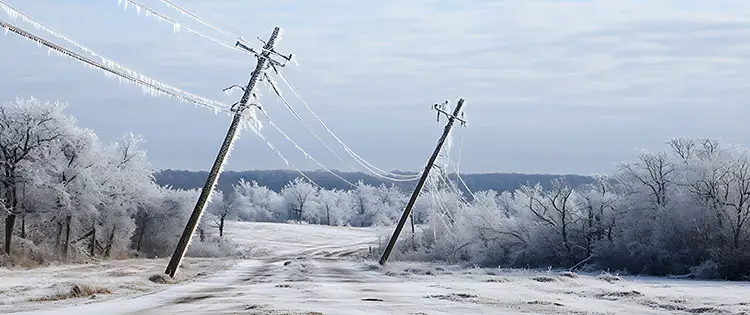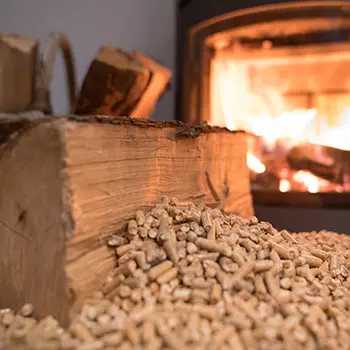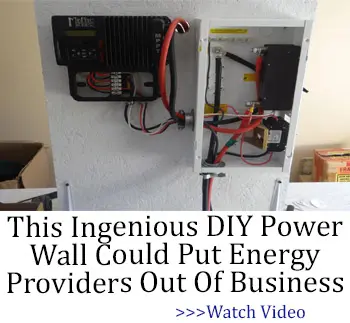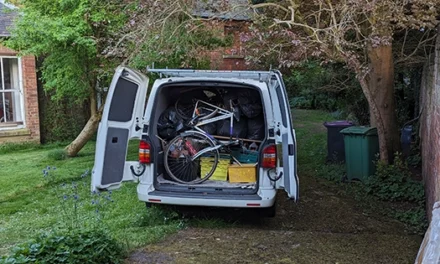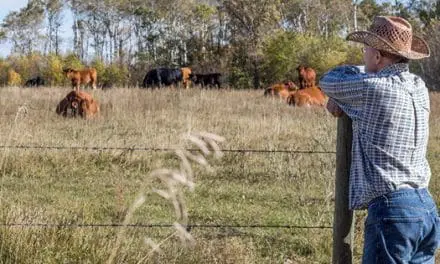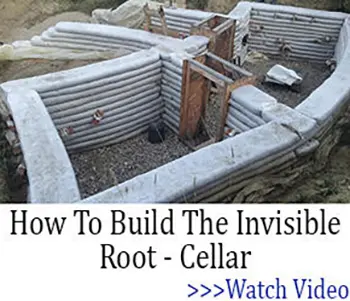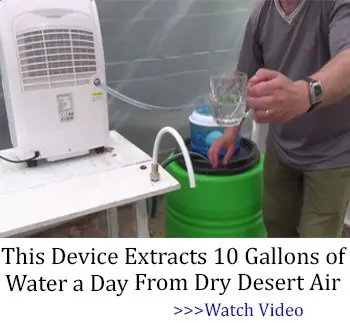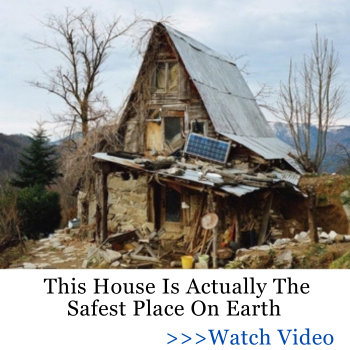Power outages are all too common and are usually the result of weather. High winds take down trees that take down power lines and ice storms can be worse. In fact, in Quebec, Canada an ice storm took out power for months across parts of Canada in Winter. So let’s see how to survive a winter power outage.
Typically, power outages are measured in hours and sometimes days. It’s when outages stretch into weeks and months that things become serious, especially in winter.
Most of us are dependent on electricity to power our furnaces and heating options from baseboard heat to something as basic as a water heater. When an outage goes beyond hours in winter, things get serious fairly quickly.
Winter Power Outage: The Worse Scenario
A winter power outage typically results from severe weather conditions like ice storms, snow, or high winds, which can damage power lines and infrastructure.
However, an EMP, whether caused by a solar flare or a nuclear detonation, could also cause widespread power outages by disrupting or damaging electrical grids and electronics. In the case of a winter EMP, the situation could worsen if the grid is already vulnerable to weather-related issues.
In either case, both scenarios would require you to have a backup plan. That’s why I wish more people knew about this EMP Cloth. This cloth was developed after years of extensive research by top U.S. scientists and it provides 98% military-grade protection against electromagnetic waves. You can cover everything in it – as long as you’ve got enough of them – from credit cards, a laptop, a fridge, and even your car!
The thing is, the EMP Cloth isn’t always available. They don’t restock them that often because they’re pretty hard to produce, so it took YEARS for me to finally get my hands on it. I found a reliable website to order it from, as I wanted to make sure the material was the right one. I recommend you secure your own cloth from here. It’s a rare find and not many people get to own it, which is a shame.
Alternative Heating Solutions 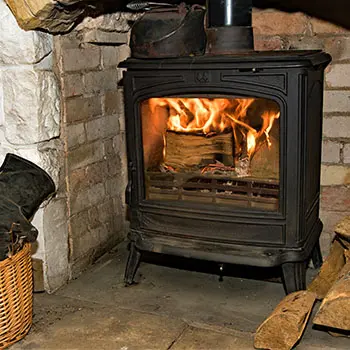
A fireplace makes things easier but if they’re not installed during the initial construction of a home they’re tough to put in after the fact. But there are alternatives.
There are a couple of ways to approach this. One is to install an alternative heat source like a wood-fired stove or pellet stove to provide heat in winter. That requires some investment and labor and also assumes an available source of firewood, if not a stockpile of wood pellets.
Other possibilities are more short term from small, alcohol-fueled heaters to heaters powered by natural gas. Natural gas is not always dependent on electricity for delivery to a home. The pressure in the natural gas lines delivers the gas without power. We’ll cover the possibilities and dangers as we go.
Related: Do This To Your Wood Stove Before Winter
Common Mistakes During a Winter Power Outage
If you have a gas stove or oven it’s tempting to use that to provide temporary heat. That can work, but be careful. You don’t want to do this over days and weeks. If you want to use your gas stove or oven to provide some heat -cook a turkey or something else on the stove. You’ll get some heat but it won’t heat the whole house and as time goes on the fumes from natural gas will accumulate in your home.
Proactive Solutions
The most proactive solution is to install a wood-burning stove or pellet stove as a backup for your heating. If you live in an area where winter power outages are common or have surprised you -it’s worth thinking about.
Stove Types 
Pellet stoves typically rely on some level of electricity to operate but there are gravity-fed pellet stoves that you light by hand that keep the house warm even without electricity.
A fireplace seems like an obvious solution, but the unfortunate fact is that most of the heat from a fireplace simply goes up the chimney. Consider a fireplace insert that will radiate more heat into your home. Some have blowers (usually powered by electricity) but you can find hand-cranked blowers on fireplace inserts and you can always think about a solar generator or other power source like solar panels to keep the blower going on a fireplace insert.
Generators
Good news and bad news with generators. The good news is that they can provide a lot of wattage to even power a whole house. The bad news is that they need fuel. Usually gasoline although some are powered by propane. The big question is how long are you going to be dependent on your fuel-powered generator for electricity.
If it’s only a matter of hours or even a couple of days, you can probably get by. If the outage continues you may find it’s harder and harder to find more fuel to keep the generator going.
Solar Generators
A solar generator is essentially a large power bank recharged by solar panels. The size of the generators varies but if the sun is shining (even through the clouds) the solar panels will recharge the solar generator.
That can give you more than enough power to keep a pellet stove working or even enough power for small space heaters.
Modular Backyard Power Plant – Best Solution for a Winter Power Outage
If you want a reliable 24/7 power source in your own backyard that allows you to outlive any long-term blackout, this is my top choice. This guide shows you the exact steps you have to take to make your own power plant.
This Backyard Power Plant can run two chest freezers, a moderate-sized refrigerator, lights, satellite TV, satellite Internet, a desktop computer, a water pump, and many, many other items.
Isolate and Consolidate 
When heat in a home is compromised because of a winter power outage it makes sense to isolate and consolidate living spaces for available heat. Close doors to unused rooms, and hang a blanket or sheet to upstairs spaces that get less heat from a wood stove or pellet stove. Isolate yourself in a living space for the short term so that you can keep warm.
Furnaces and other whole house heating systems manage to get the heat everywhere. During a power outage, you’re generating heat in specific and small spaces. Keep the spaces small and specific. If you all have to sleep on a mattress next to the wood stove for the night -that might be a good idea.
In fact, many primitive people shared a bed as a family to share their body heat under covers. In a survival situation, it still works and is worth thinking about.
Other Small Space Solutions 
Propane heaters work well for heating small spaces in an emergency, but they require ventilation. It’s tricky to heat a space while keeping a window cracked open to let in cold air for ventilation.
An alcohol-wicking heater is a simple solution: take an empty paint can, stuff it in toilet paper, pour in rubbing alcohol, and light it. It burns steadily for hours, but again, ventilation is recommended. If you have a fireplace (but no firewood), it can provide both heat and ventilation.
Related: DIY Solar Water Heaters To Cut Down On Energy Bills
You can also use tea candles under a large, inverted flower pot. The pot helps direct heat into the room without worrying too much about ventilation, as candles don’t release harmful fumes.
If all else fails, pile on blankets. They’re a simple but effective way to stay warm, day or night.
Dress warmly, indoors or out. You might only need to wear a hood inside for a couple of days, but it makes a big difference.
If you have a solar generator or batteries with an inverter, an electric blanket can keep you warm through the night. You can lie on it and let the heat drift up while you use regular blankets for extra warmth.
What About Water, Cooking, Cleaning, Sanitation and Refrigeration and Freezing During a Winter Power Outage
When it’s cold and the powers out we want to stay warm. But we still have to eat, drink water, flush a toilet, and then there’s all that stuff in the refrigerator and freezer. The good news is that winter makes it a little easier to keep foods cold or frozen. The garage is a good place to start or a cooler on the deck or back porch for frozen foods.
Water may be simple to find if there’s snow on the ground or ice hanging from the gutters. Collect and bring it somewhere warm and let it melt. Filter it and boil it, but at least you’ll have some water.
If you collect enough you can fill a toilet tank and get a good flush. Keep collecting that snow and ice.
Stockpile Medications Before a Winter Power Outage
Being ready means preparing to handle things on your own for several weeks.
If you take regular medications, always keep a supply for several weeks. Over-the-counter meds are just as important. You don’t want to run out of children’s Advil in the middle of a winter blackout! Since antibiotics are typically not available over the counter, here is an ingenious way to stockpile antibiotics without a prescription while you still can.
Bail Out
If the power just won’t come back on you could always bail out or bug out. This could be as simple as going to another family member’s home that still has power, a local hotel that still has the lights on, or a local emergency shelter set up for the power outage.
It all depends on the temperatures and the health and age of the people in your family or group. The biggest challenge is the unknown duration of any power outage. We all remember those times after an outage when the lights suddenly came back on. What we dread is a time when that never happens and we have to wonder what we’re going to do.
Amish Powerless Tools For A World Without Power
How to Draw Electricity from Dead Batteries (Video)
Veggies You Should Actually Grow in Winter
Survival Items That Will Skyrocket in Price in 2025
I Tried Eating Like a Pioneer for 100 Days and This Is What Happened

